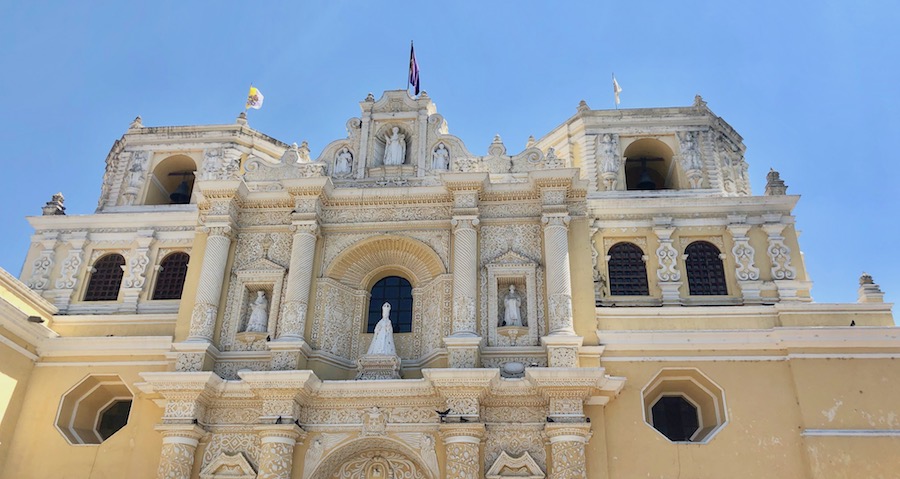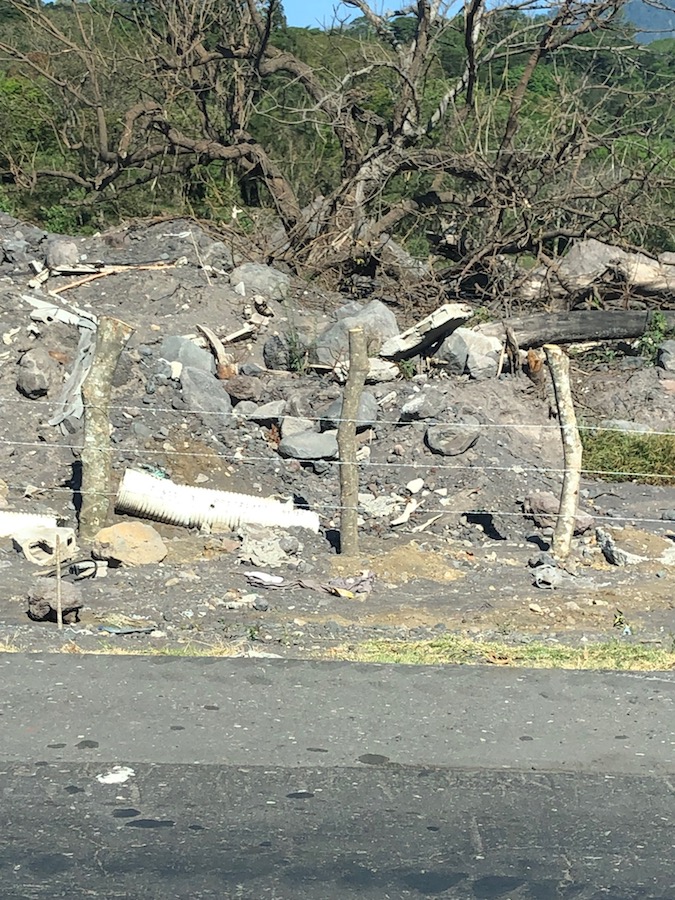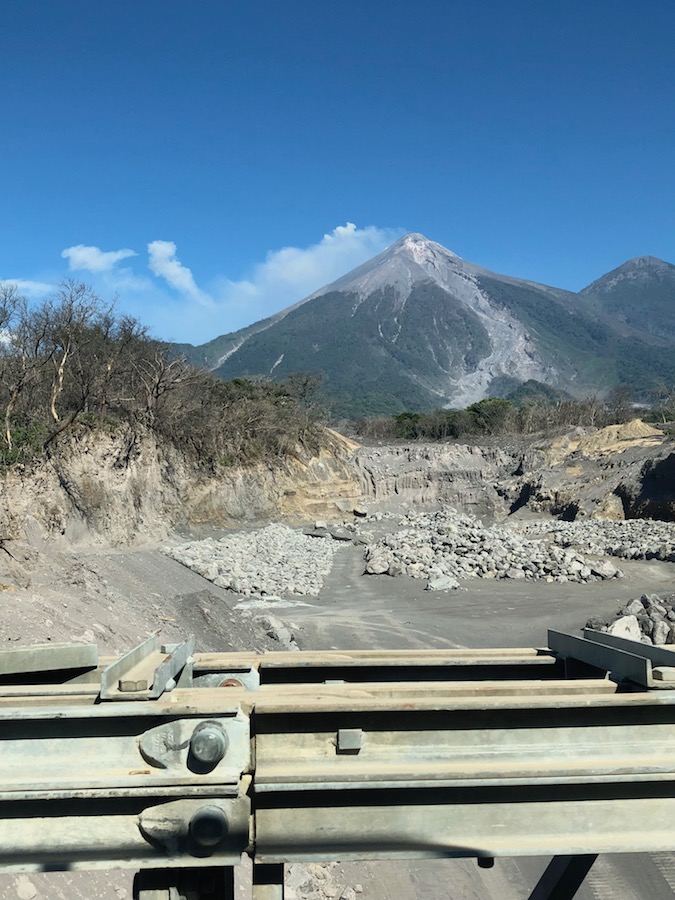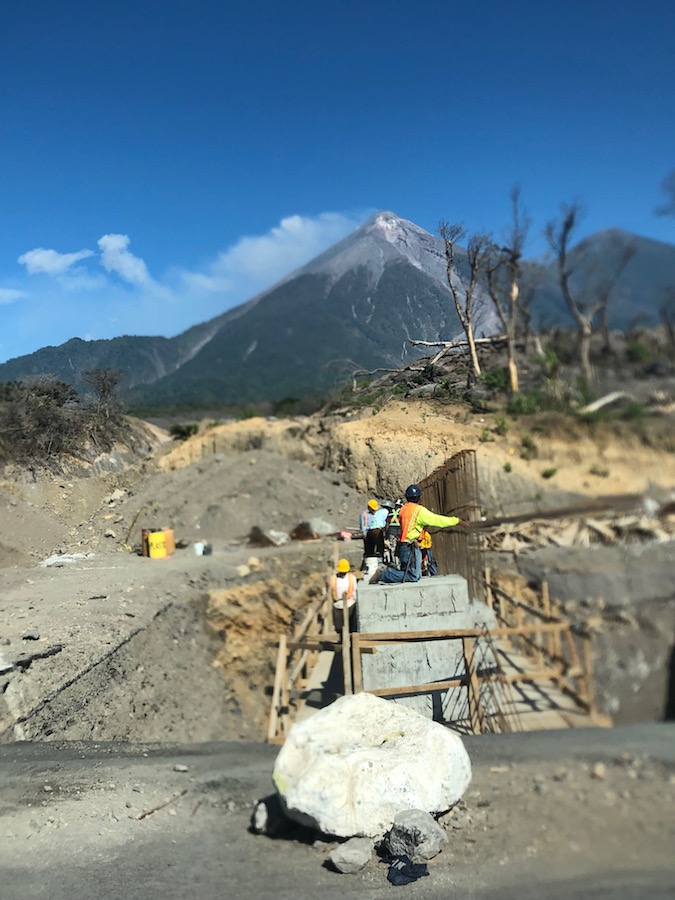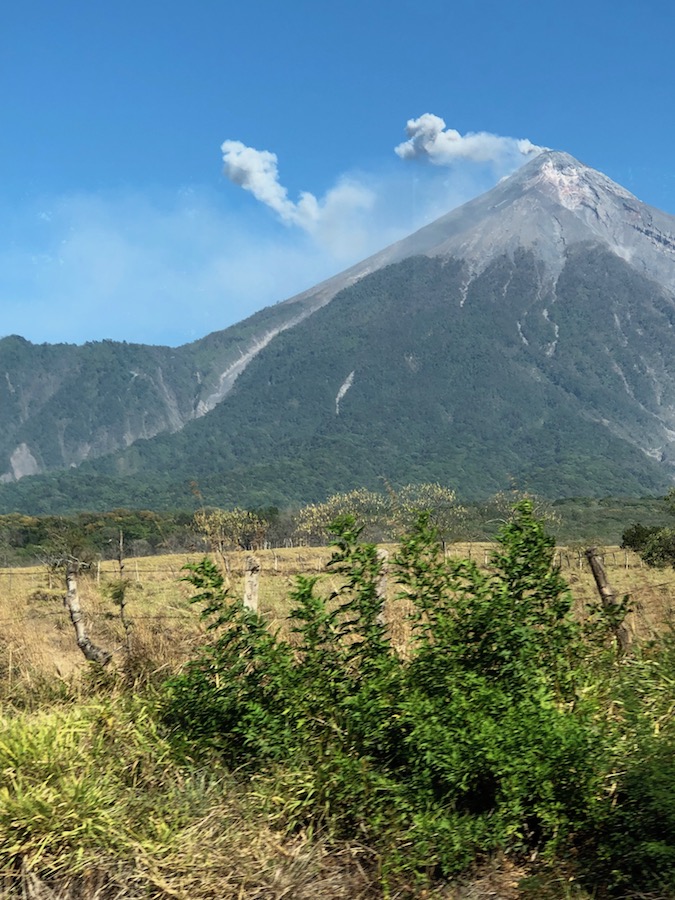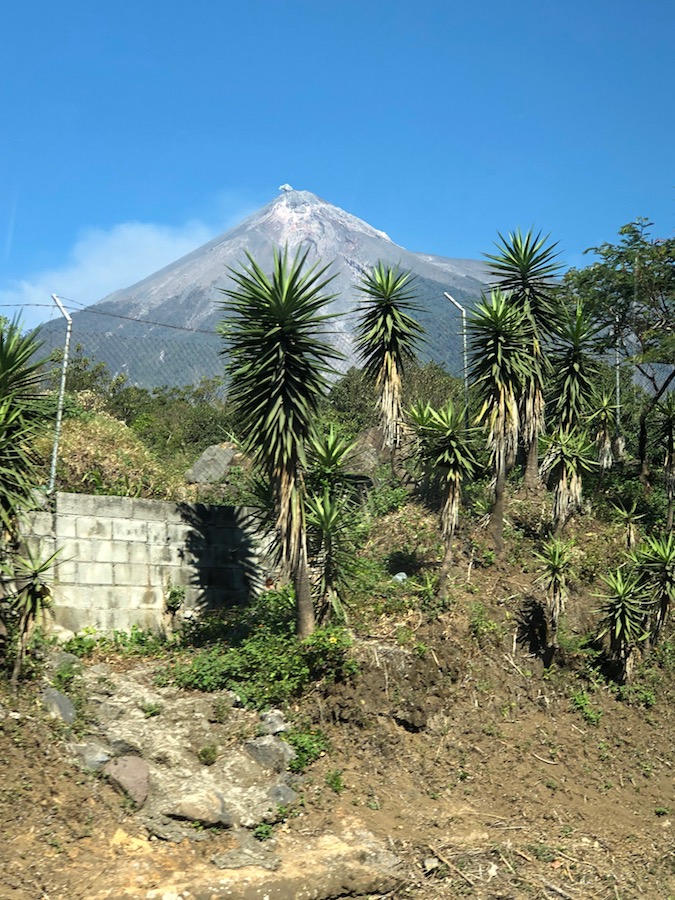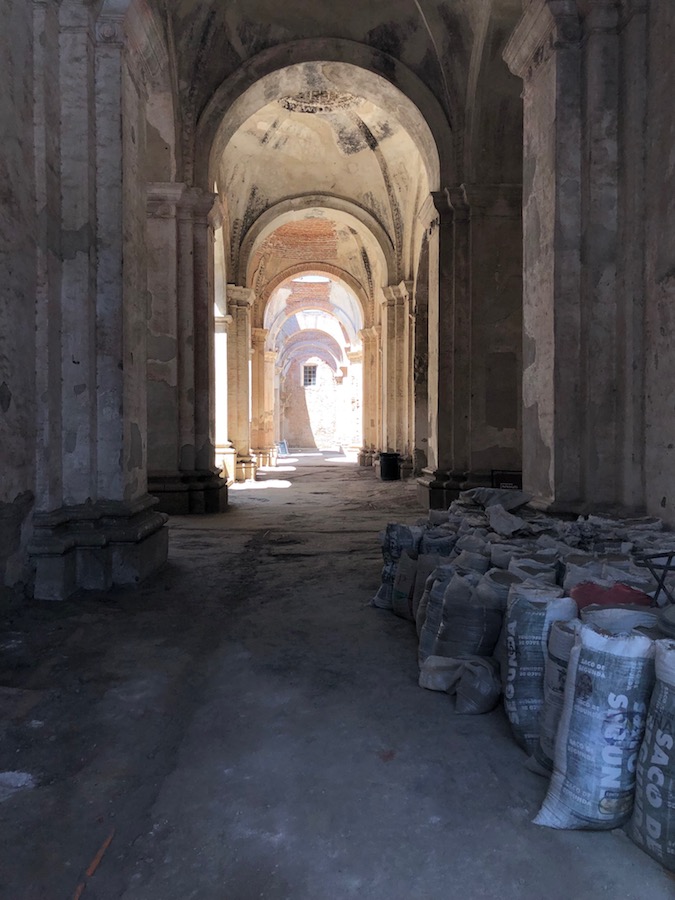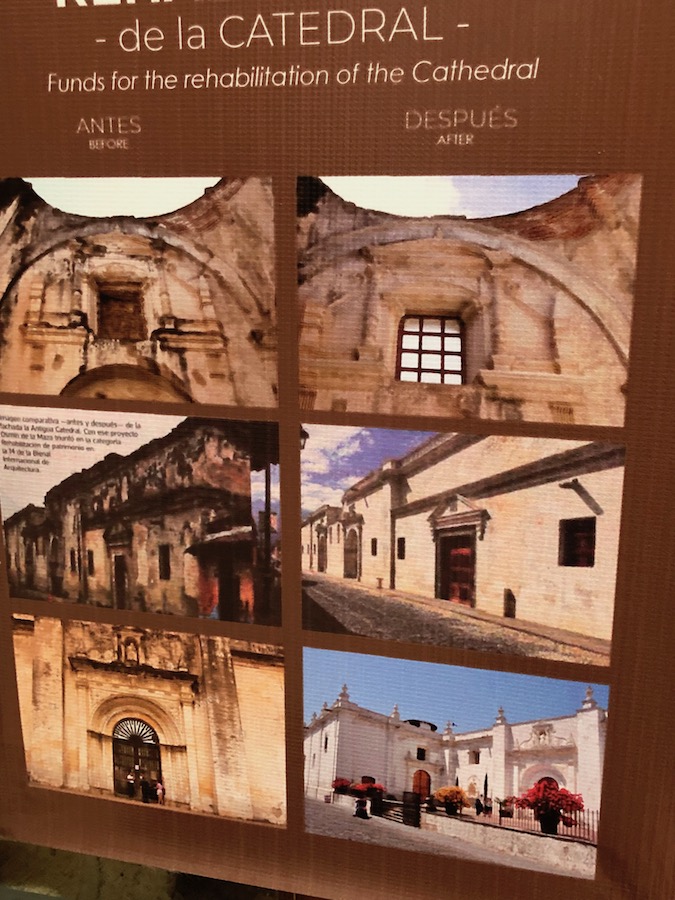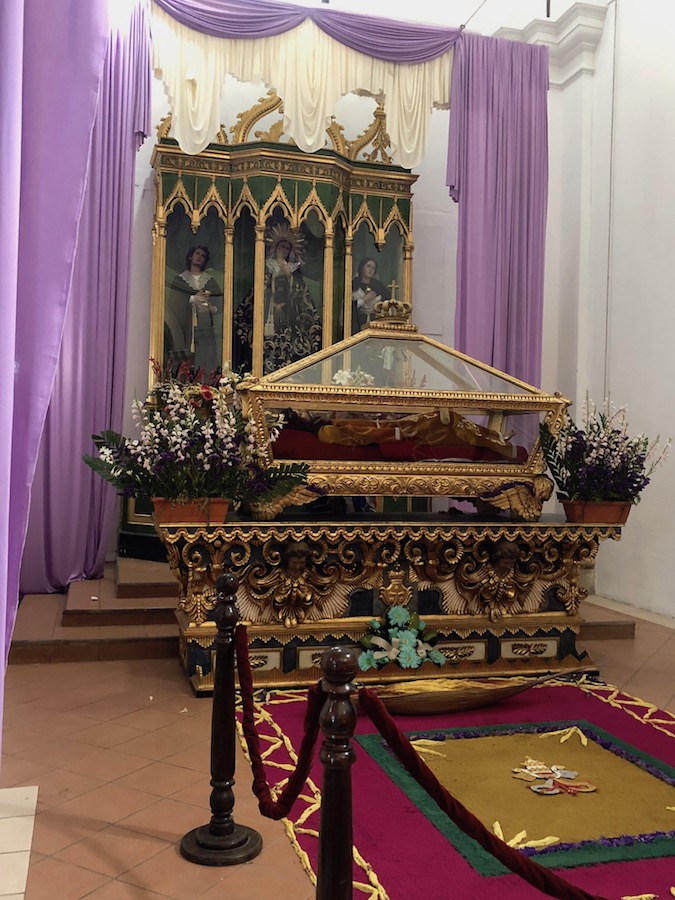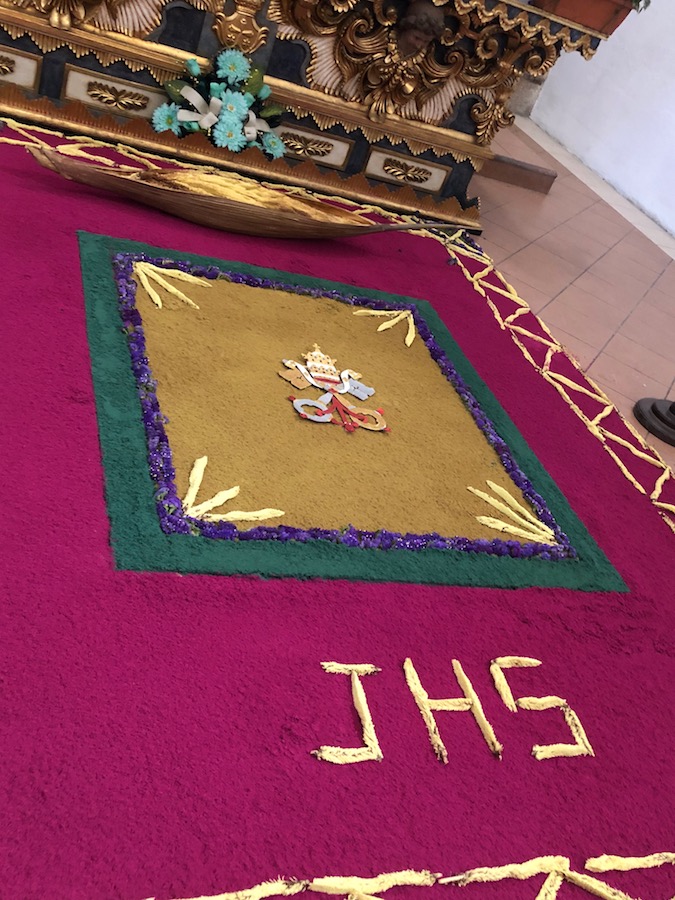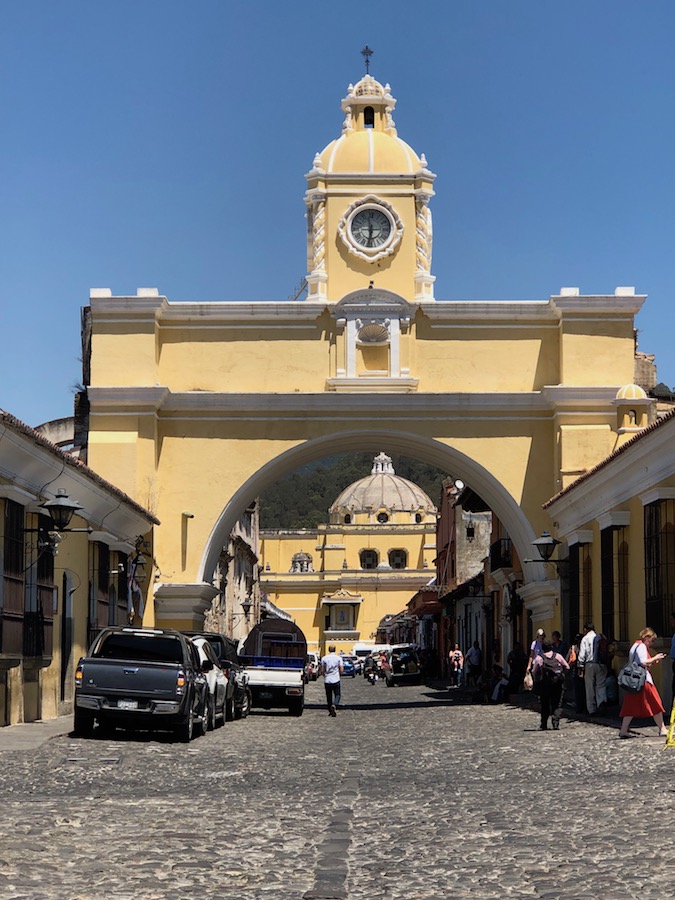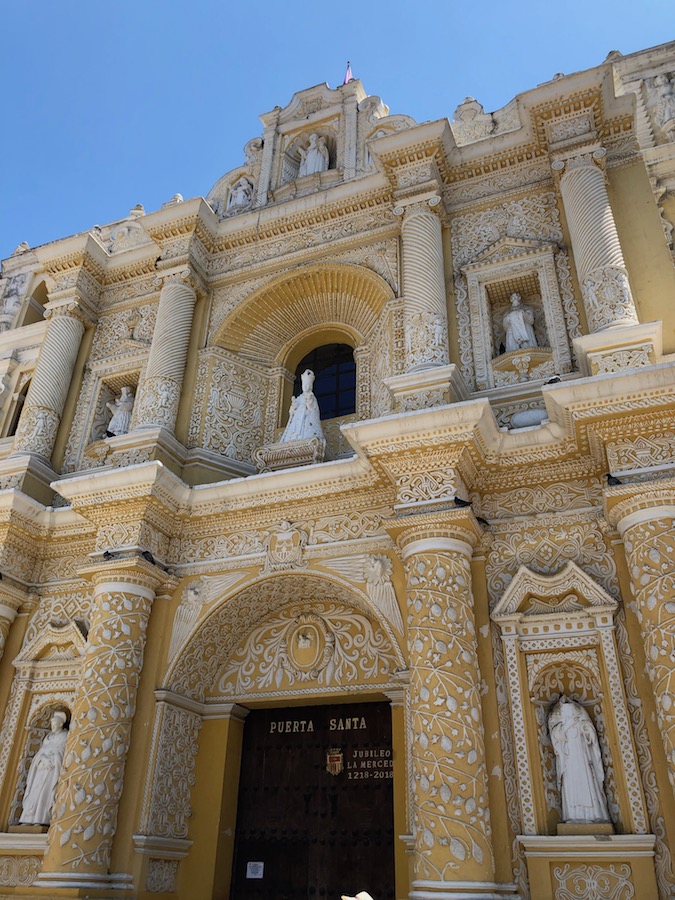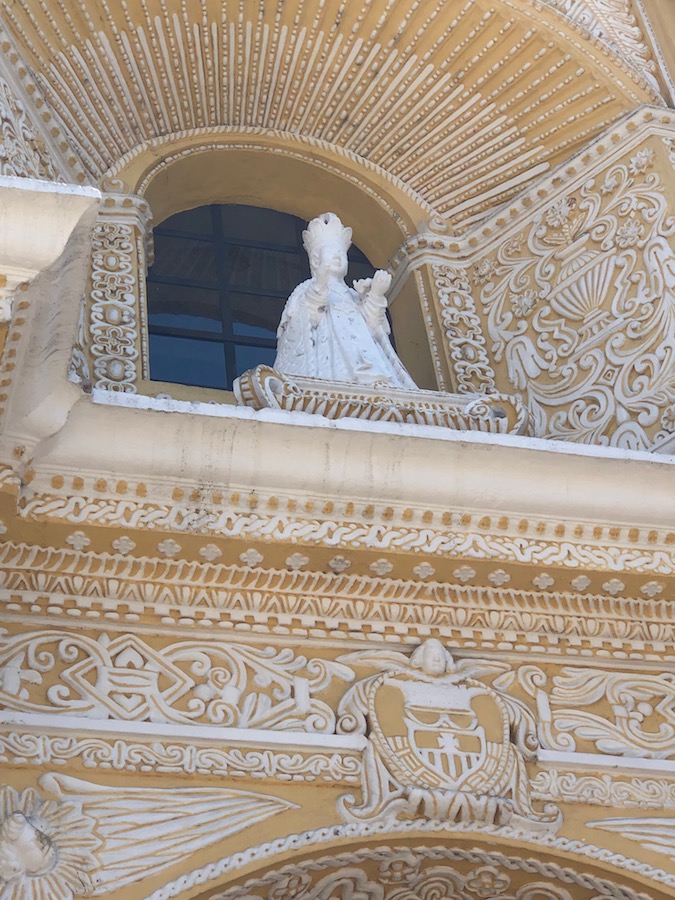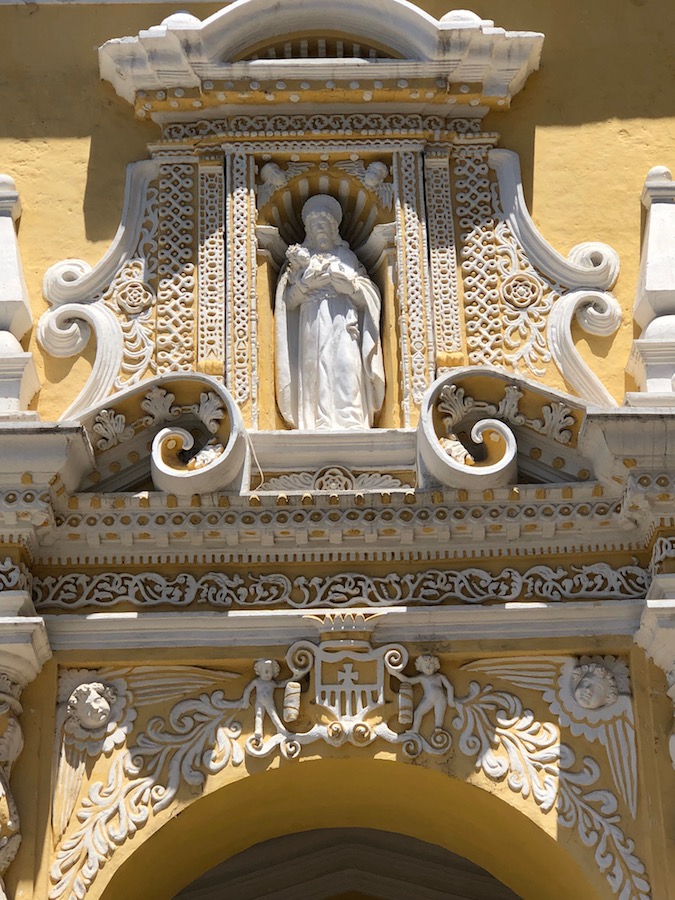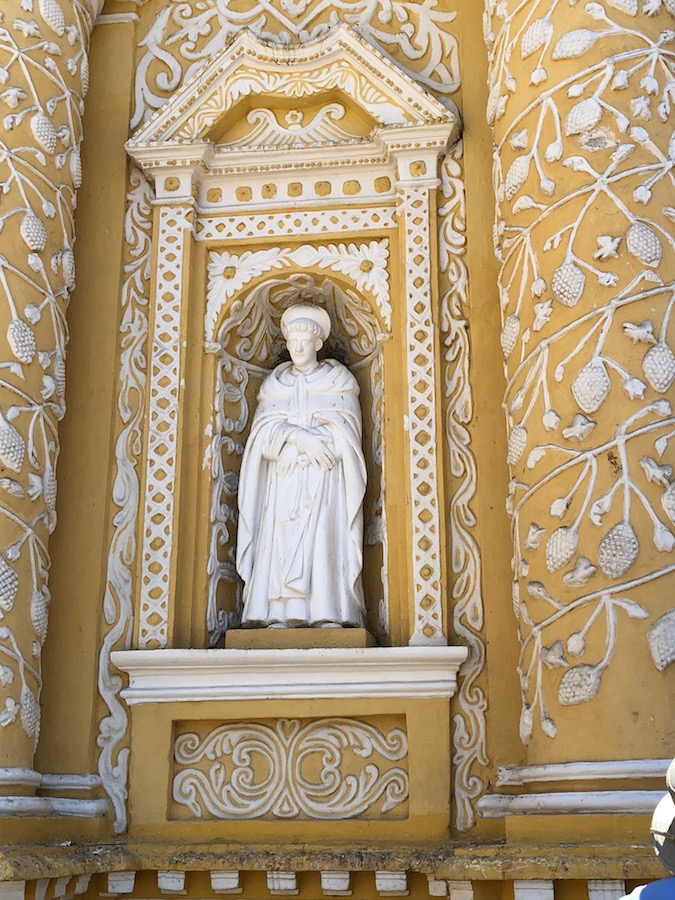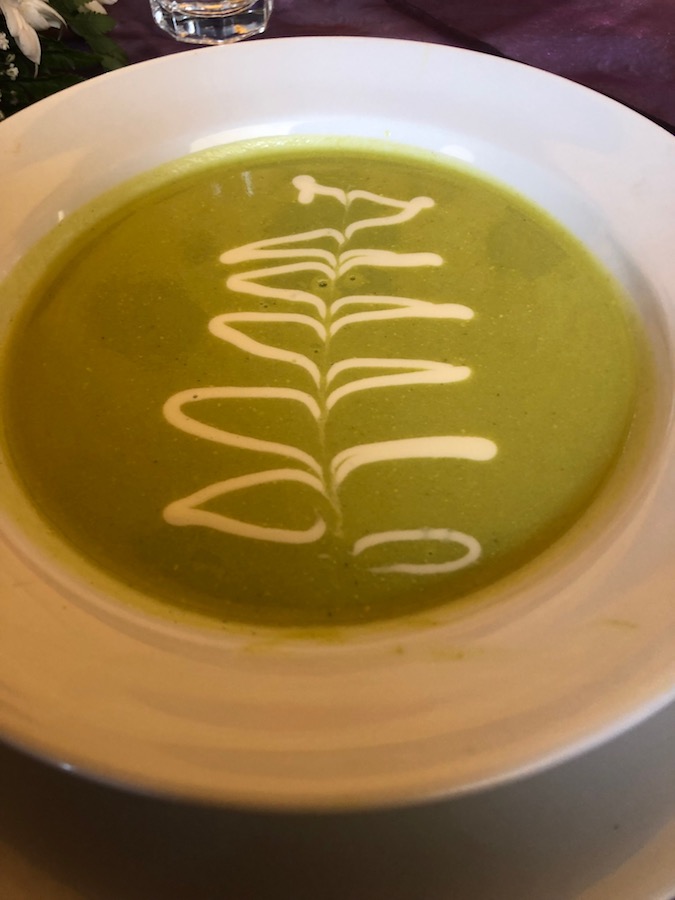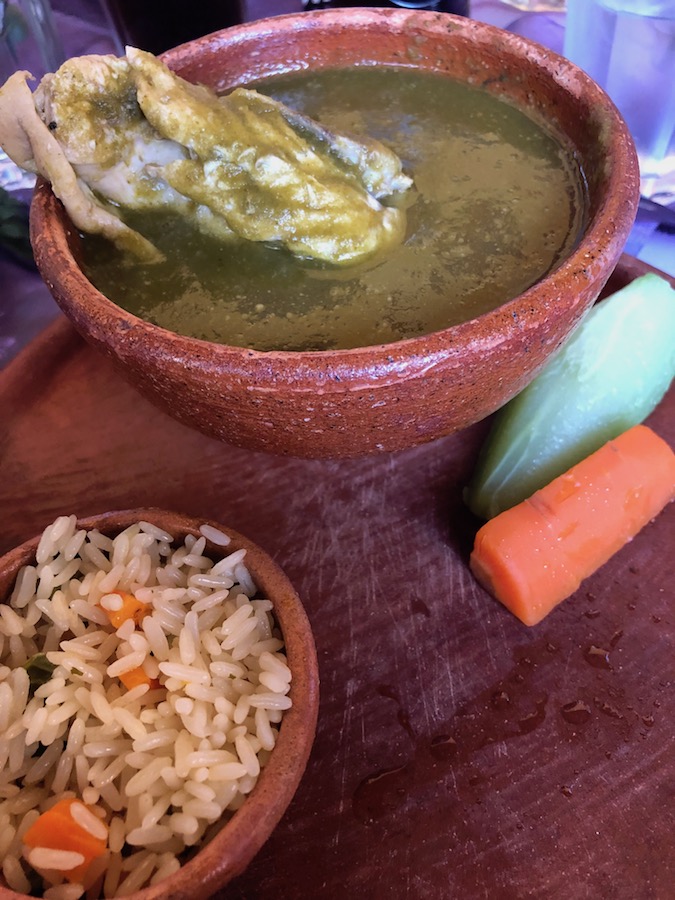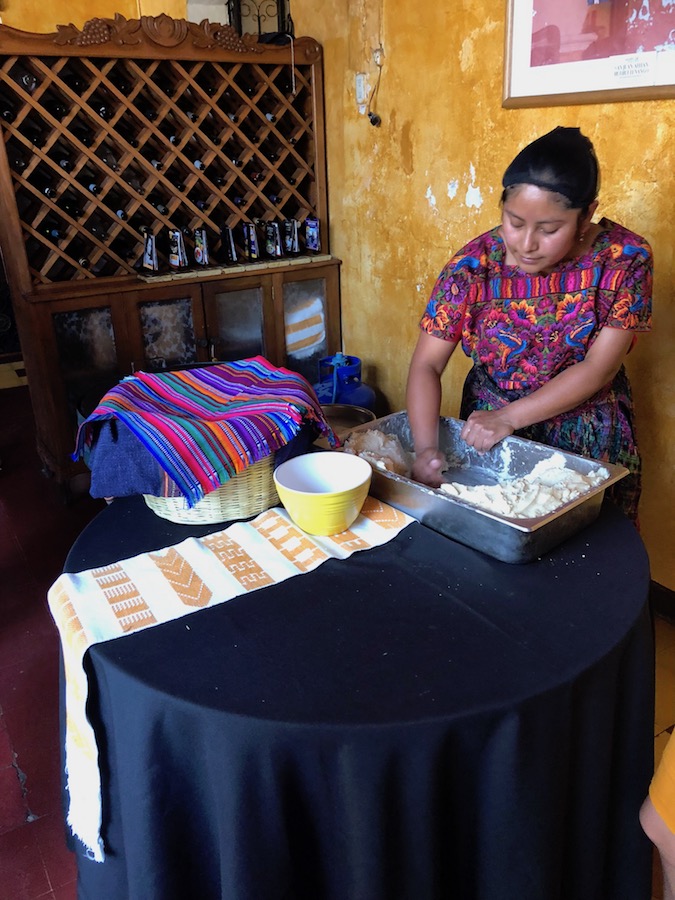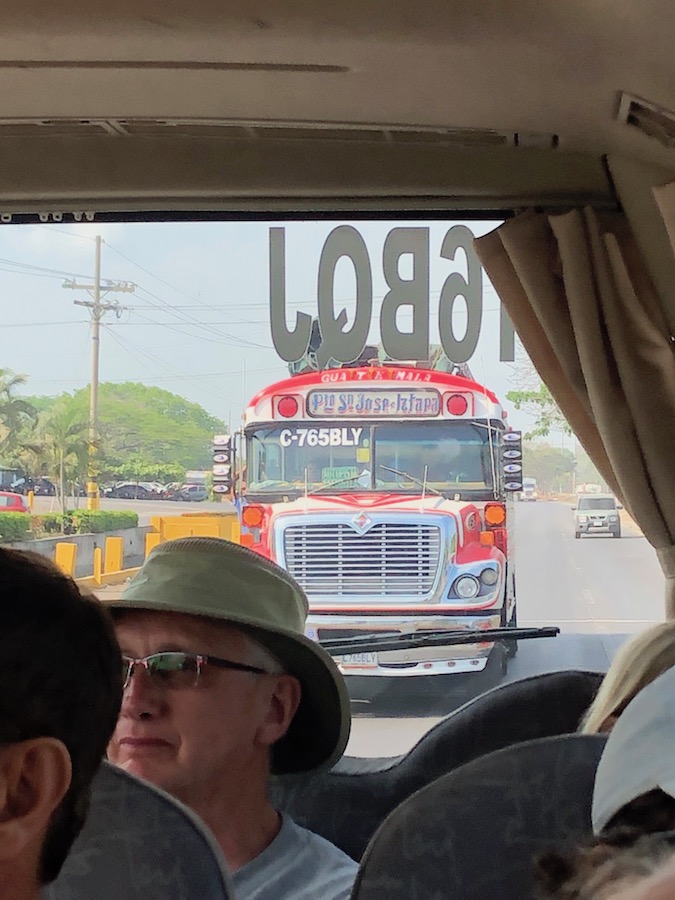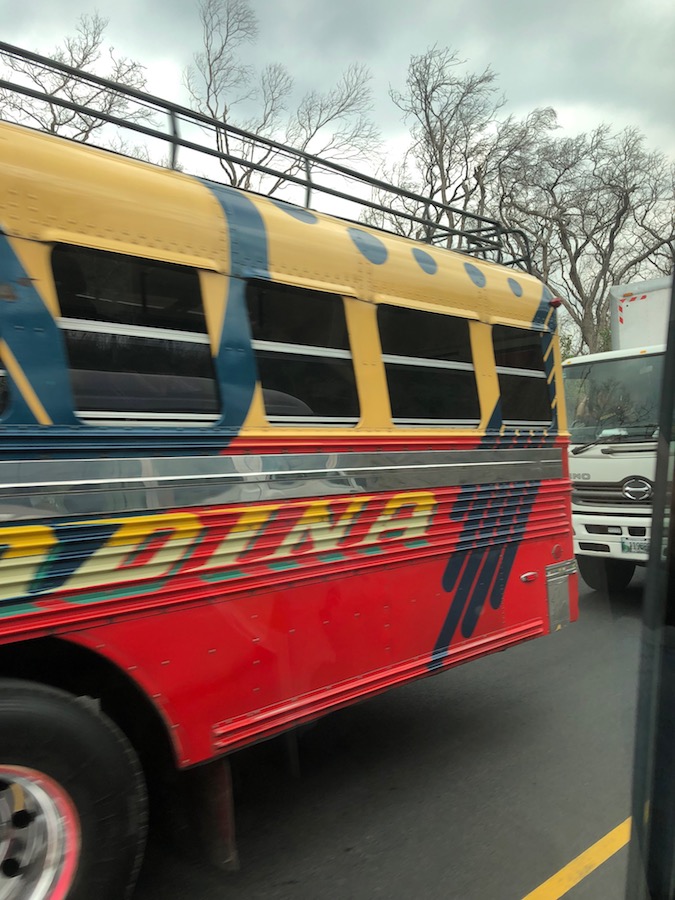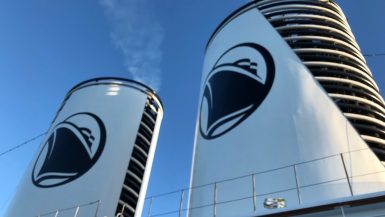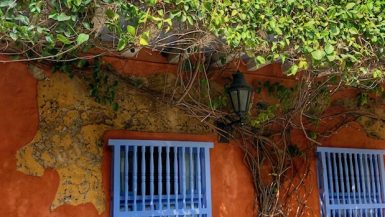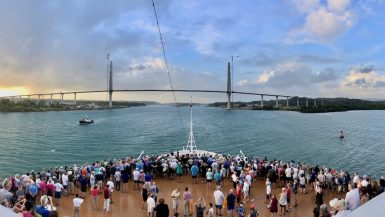March 11, 2019
We docked early this morning in Puerto Quetzal, Guatemala, a port used mainly for cargo (the Coral Princess was docking at San Juan del Sur, a more touristy port). Although it is mainly used for cargo, a cruise pier had recently been rebuilt following a destructive storm. In fact, our ship was the first to dock since the rebuilding. At some point, while we were on our excursion, there was a rededication of the pier that included a visit by the country’s President, Jimmy Morales. We met a few passengers later who attended the ceremony and shook his hand.
When we were given the go ahead to disembark, we crossed the short bridge and through a handicraft market to meet our guide for the day, Juan Pablo (JP).
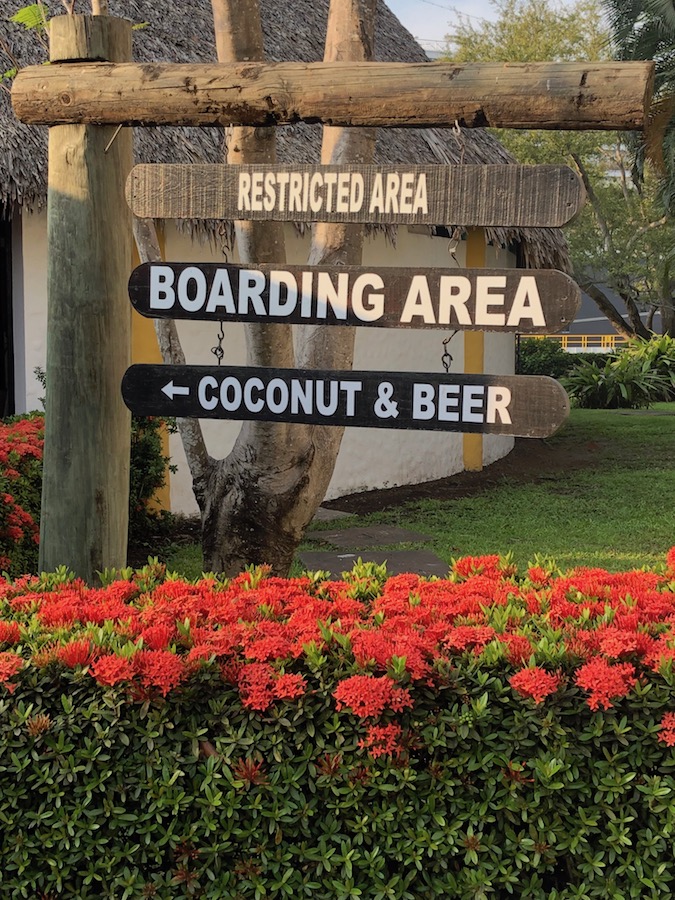
Our chariot for the day was a 22 passenger bus, which had nary an empty seat. While the air conditioning was cold enough to keep us comfortable, the shock absorbers were not strong enough to compete with the bumpy roads. Thank goodness Joan and I weren’t sitting over the wheel wells.
Almost immediately, we had excellent views of three of Guatemala’s 37 volcanoes – Agua (Water), Acatenango, and Fuego (Fire). Of the three, only Fuego is active. In early June 2018, Fuego erupted violently multiple times sending lava and ash several miles destroying everything in its path and killing thousands. The aftermath is still being cleared nine months later. Roads are still hard to pass; bridges are basic and undergoing reconstruction. Based on the pace of the workers we saw, it will be a while until things are back to a new normal. We passed through the area on the way to and from Antigua. The devastation was all consuming.
Fuego still erupts every 4-5 minutes, but just to let off steam. As they say, it’s better to release it than bottle it up!
To our guide, it was all very interesting. In fact, every time he wanted to impart a new fact (and there were many over several hours), his sentence started with “It’s very interesting ….” Most of the time, he was right it was interesting. For example, did you know:
- Guatemala is home to 20,000 species or orchids, 65 varieties of mangoes and 10 species of corn
- the Quetzal is the national bird, a sacred symbol of the Mayans, and is also the name of the country’s currency
- Guatemala is pluricultural; it has 25 different cultures – 22 are descended from the Mayans, and 25 different languages
- you can tell which Mayan culture a woman is descended from by the ornamentation on her blouse
Entering Antigua, Guatemala’s best preserved colonial city, I knew I was going to want to spend more time there in the future. Despite the over-exuberance (read this as pushiness) of the street vendors, the city was so colorful, historic and welcoming; it was quite delightful. My kind of place. It is no wonder Antigua is an expat haven (it rivals the Lake Atitlan area in Guatemala).
Our excursion into the city started at the old outdoor laundry, where the women of the city came to wash clothes (likely the clothes of the wealthy Spanish who lived in Antigua, rather than their own clothes).
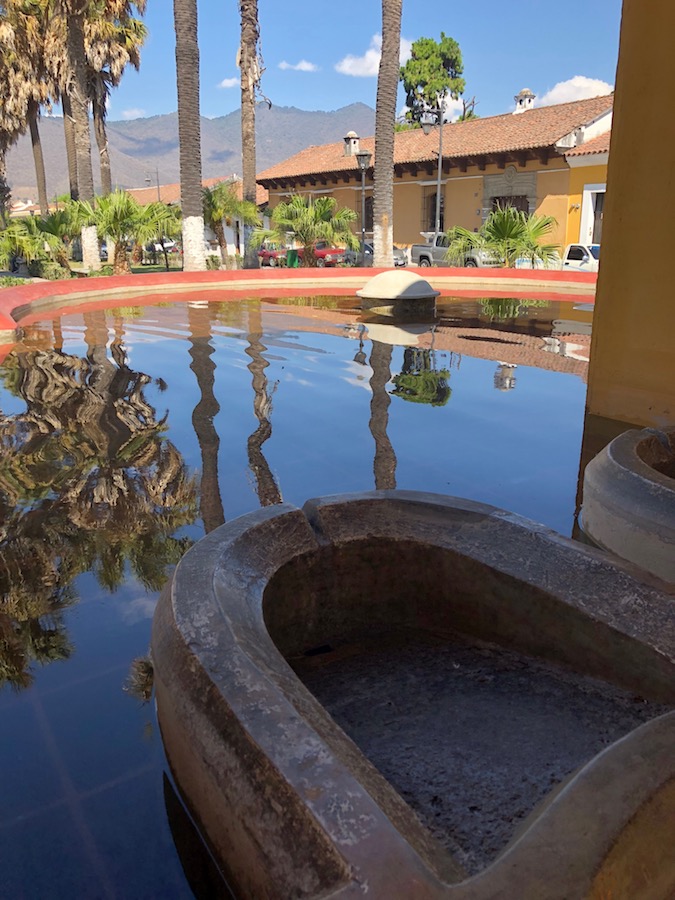
Our walking tour continued through the streets, past colonial style homes to a jade factory.
The process of mining and refining jade was interesting and the associated museum held several very lovely pieces. It also afforded a few photo opportunities.

On the way out of the museum, we saw beautiful examples of Guatemalan weaving and handicrafts.
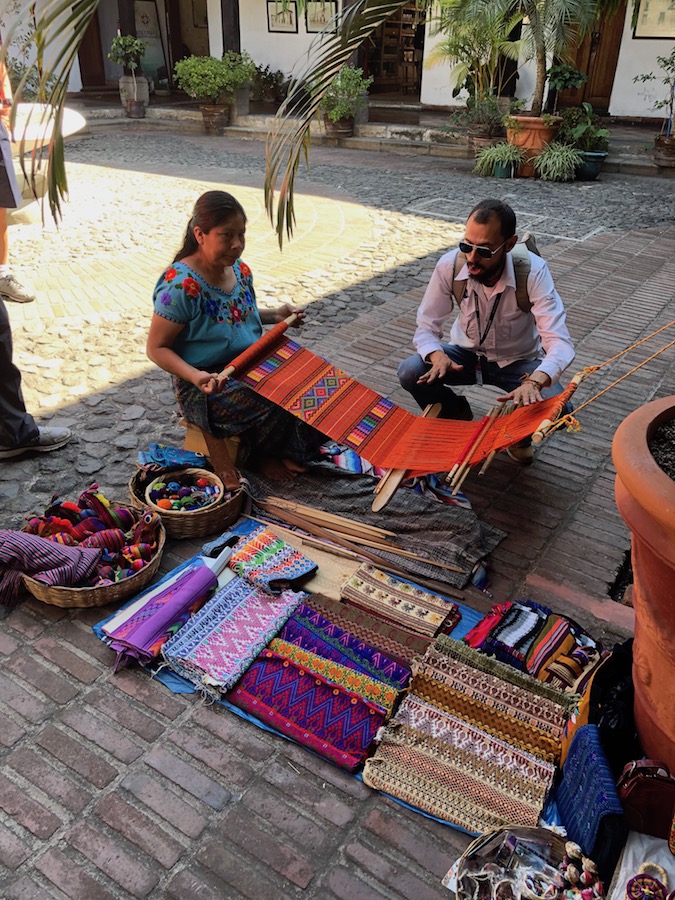
While waiting for the rest of the group to gather, I spoke to JP about the economy. Apparently, the unemployment rate in Guatemala is 40%, but doesn’t include the informal economy of street vendors (he estimated the actual unemployment to be around 10-15%). The average salary is $300 (USD) per month. His 2-bedroom apartment costs $175 per month; however, he lives in Guatemala City, which has a lower cost of living. The same apartment would likely rent for $500 per month in Antigua (the influx of expats has driven prices higher). To make ends meet, he supplements his tour guide income with bartending and restaurant work.
Education is free but is not mandatory. School vacations follow the harvest seasons – the longest is from the beginning of October to the first week in January for the coffee harvest. Many of the Mayan descendants do not send their children to school because the teachers do not speak their Mayan dialects – they prefer to send children to work.
Our trip occurred just after Lent, therefore, purple and white banners still hung throughout the city. Antigua is 90-95% Catholic (less in the remainder of the country). Much of the large Cathedral was devastated in an earthquake in 1773. Only 25% of it is usable, although the city is attempting to rebuild other portions of the structure.
Inside the cathedral, we saw one of the carpets of seeds, plants, and fruits created for festivals and holidays by family groups, although it was a very small example of what is usually made.
We continued on to the lovely main square and through the handicraft market to the famous Arco de Santa Catalina – Guatemala’s most distinctive landmark.
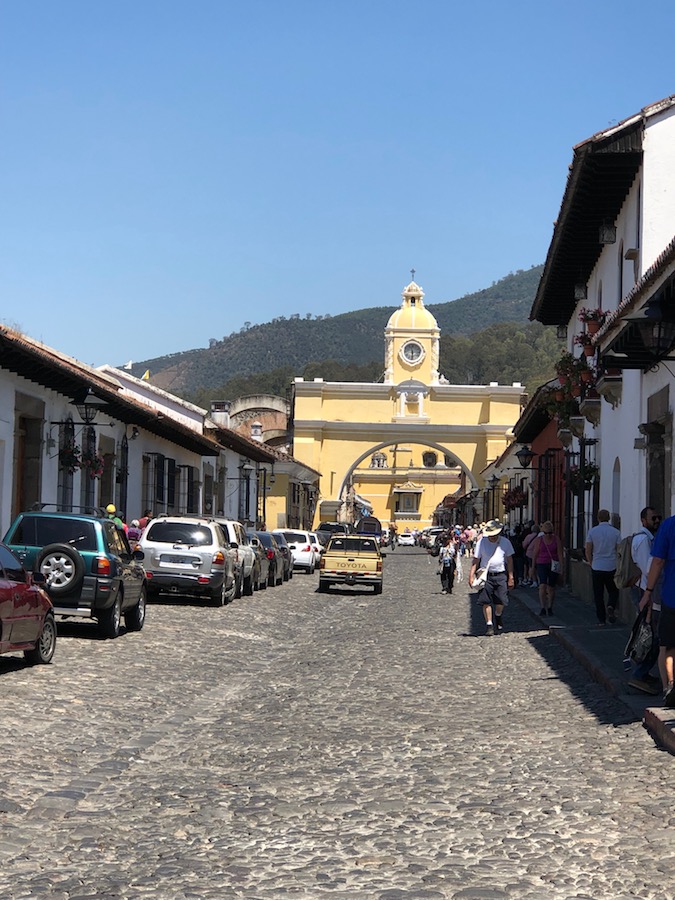
Built in the 17th century, the bridge (arch) connected the convent to a school and additional housing for the nuns. The consecrated nuns used it to pass from one side of the street to the other without being seen. I took lots of photos, from both sides of the arch. One direction captures a church in the background, the other direction captures a volcano.
The church behind the arch is the Iglesias de La Merced, a beautiful example of ornamented baroque architecture. Although closed for interior repairs, we got close to the spectacular exterior.
Lunchtime – we dined at the restaurant located in the old convent. My lunch began with a lusciously creamy zucchini and spinach soup topped with crema. The soup was followed by Jacon de Pollo, a chicken stew with a tomatillo verde sauce. Although it wasn’t spicy (I like a little heat), it was so delicious I almost licked the bowl. Instead, I used freshly made tortillas to scoop up every drop.
Joan opted for salad and a chicken breast dish, which were a little tamer on the “exotic” scale, but she enjoyed her meal. Our lunch companions from the ship kept us entertained, especially an elderly gentleman named Fred, who reminded me of my grandfather (whose name was also Fred).
Our trip back to the ship allowed for more views of the omnipresent volcanoes. We even raced a brightly colored local chicken bus – it won.
Guatemala, I won’t bid you farewell, I will only say, “see you next time.”

